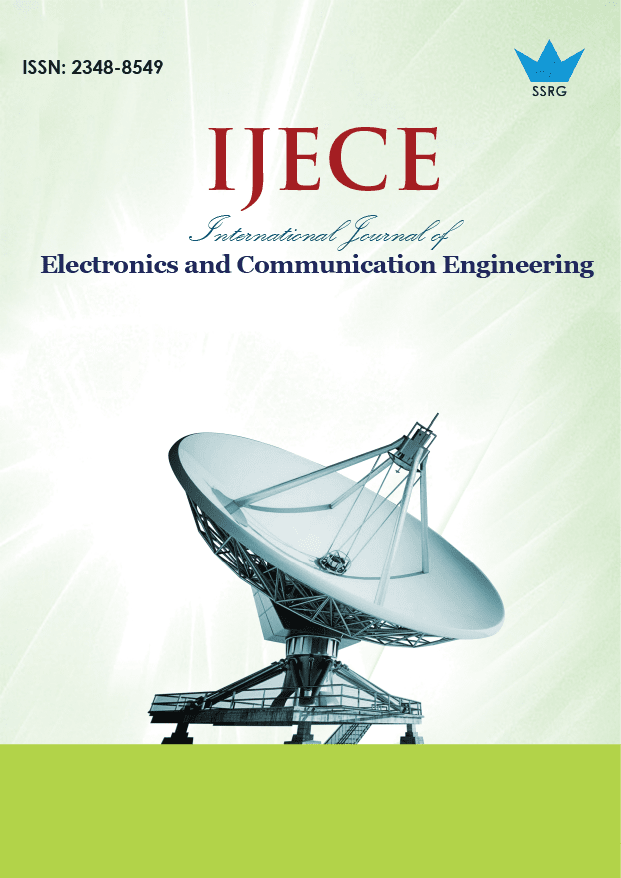Federated Learning with Interpretable Deep Models for Diabetes Prediction in Non-IID Settings Using the Flower Framework

| International Journal of Electronics and Communication Engineering |
| © 2025 by SSRG - IJECE Journal |
| Volume 12 Issue 9 |
| Year of Publication : 2025 |
| Authors : Prachi Gawande, Yogita Dubey, Punit Fulzele |
How to Cite?
Prachi Gawande, Yogita Dubey, Punit Fulzele, "Federated Learning with Interpretable Deep Models for Diabetes Prediction in Non-IID Settings Using the Flower Framework," SSRG International Journal of Electronics and Communication Engineering, vol. 12, no. 9, pp. 1-10, 2025. Crossref, https://doi.org/10.14445/23488549/IJECE-V12I9P101
Abstract:
In the era of privacy-preserving Machine Learning (ML), Federated Learning (FL) presents a transformative example for collaborative model training across distributed data sources without exposing sensitive information. This paper investigates the application of FL in healthcare using the Pima Indians Diabetes dataset, with a strong emphasis on non-Independent and Identically Distributed (non-IID) data partitioning, local client updates, and model interpretability. Three fully connected layers in a neural network and ReLU activations, implemented in PyTorch, are trained across five simulated clients using the Flower (FLWR) framework. The dataset is standardized, and clients receive shards of label-sorted data to replicate real-world heterogeneity across healthcare providers. Each Client trains its model using the Adam optimizer and cross-entropy loss, with local training loss monitored over multiple epochs. Post-training, interpretability techniques-LIME (Local Interpretable Model-agnostic Explanations)- were employed to explain distinct predictions and global feature influence. Experimental results demonstrate that while federated learning can achieve reasonable performance in non-IID settings, interpretability insights vary significantly across clients due to data distribution disparities. The findings highlight the need for client-aware personalization and future enhancements in federated optimization strategies, communication efficiency, and explainable AI in sensitive domains like healthcare.
Keywords:
Federated learning, Privacy-preserving machine learning, Flower framework, Pytorch, Pima Indians diabetes, Neural networks, Healthcare AI, Data privacy, Distributed learning, Model aggregation.
References:
[1] Health Insurance Portability and Accountability Act of 1996 (HIPAA), U.S. Department of Health & Human Services, 2024. [Online]. Available: https://www.cdc.gov/phlp/php/resources/health-insurance-portability-and-accountability-act-of-1996-hipaa.html
[2] General Data Protection Regulation (GDPR), Intersoft Consulting. [Online]. Available: https://gdpr-info.eu/
[3] Alvin Rajkomar, Jeffrey Dean, and Isaac Kohane, “Machine Learning in Medicine,” New England Journal of Medicine, vol. 380, no. 14, pp. 1347-1358, 2019.
[CrossRef] [Google Scholar] [Publisher Link]
[4] Qiang Yang et al., “Federated Machine Learning: Concept and Applications,” ACM Transactions on Intelligent Systems and Technology, vol. 10, no. 2, pp. 1-19, 2019.
[CrossRef] [Google Scholar] [Publisher Link]
[5] Brendan McMahan et al., “Communication-Efficient Learning of Deep Networks from Decentralized Data,” Proceedings of the 20th International Conference on Artificial Intelligence and Statistics, vol. 54, pp. 1-11, 2017.
[CrossRef] [Google Scholar] [Publisher Link]
[6] Tian Li et al., “Federated Learning: Challenges, Methods, and Future Directions,” IEEE Signal Processing Magazine, vol. 37, no. 3, pp. 50-60, 2020.
[CrossRef] [Google Scholar] [Publisher Link]
[7] M. Kairouz et al., “Advances and Open Problems in Federated Learning,” Foundations and Trends® in Machine Learning, vol. 14, no. 1-2, pp. 1-210, 2021.
[CrossRef] [Google Scholar] [Publisher Link]
[8] Yue Zhao et al., “Federated Learning with Non-IID Data,” arXiv Preprint, pp. 1-12, 2018.
[CrossRef] [Google Scholar] [Publisher Link]
[9] Daniel J. Beutel et al., “Flower: A Friendly Federated Learning Research Framework,” arXiv Preprint, pp. 1-15, 2020.
[CrossRef] [Google Scholar] [Publisher Link]
[10] Marco Tulio Ribeiro, Sameer Singh, and Carlos Guestrin, “Why Should I Trust You?": Explaining the Predictions of Any Classifier,” Proceedings of the 22nd ACM SIGKDD International Conference on Knowledge Discovery and Data Mining, pp. 1135-1144, 2016.
[CrossRef] [Google Scholar] [Publisher Link]
[11] Scott M. Lundberg, and Su-In Lee, “A Unified Approach to Interpreting Model Predictions,” Advances in Neural Information Processing Systems, vol. 30, pp. 1-10, 2017.
[Google Scholar] [Publisher Link]
[12] Adam Paszke et al., “PyTorch: An Imperative Style, High-Performance Deep Learning Library,” Advances in Neural Information Processing Systems vol. 32, pp. 8024-8035, 2019.
[Google Scholar] [Publisher Link]
[13] Pima Indians Diabetes Database, National Institute of Diabetes and Digestive and Kidney Diseases, Kaggle. [Online]. Available: https://www.kaggle.com/datasets/uciml/pima-indians-diabetes-database
[14] Isabelle Guyon et al., Feature Extraction: Foundations and Applications, Springer Berlin Heidelberg, pp. 1-778, 2008.
[Google Scholar] [Publisher Link]
[15] Fabian Pedregosa et al., “Scikit-Learn: Machine Learning in Python,” Journal of Machine Learning Research, vol. 12, pp. 2825-2830, 2011.
[Google Scholar] [Publisher Link]
[16] Diederik P. Kingma, and Jimmy Lei Ba, “Adam: A Method for Stochastic Optimization,” arXiv Preprint, pp. 1-15, 2015.
[CrossRef] [Google Scholar] [Publisher Link]
[17] Yu Cheng et al., “A Survey on Model Compression and Acceleration for Deep Neural Networks,” arXiv Preprint, vol. 53, no. 4, pp. 2649-2677, 2020.
[CrossRef] [Google Scholar] [Publisher Link]
[18] Ian Goodfellow, Yoshua Bengio, and Aaron Courville, Deep Learning, MIT Press, pp. 1-775, 2016.
[Google Scholar] [Publisher Link]
[19] Kang Wei et al., “Federated Learning with Differential Privacy: Algorithms and Performance Analysis,” IEEE Transactions on Information Forensics and Security, vol. 15, pp. 3454-3469, 2020.
[CrossRef] [Google Scholar] [Publisher Link]
[20] Micah J. Sheller et al., “Federated Learning in Medicine: Facilitating Multi-Institutional Collaborations without Sharing Patient Data,” Scientific Reports, vol. 10, pp. 1-12, 2020.
[CrossRef] [Google Scholar] [Publisher Link]
[21] Ittai Dayan et al., “Federated Learning for Predicting Clinical Outcomes in Patients with COVID-19,” Nature Medicine, vol. 27, no. 10, pp. 1735-1743, 2021.
[CrossRef] [Google Scholar] [Publisher Link]

 10.14445/23488549/IJECE-V12I9P101
10.14445/23488549/IJECE-V12I9P101